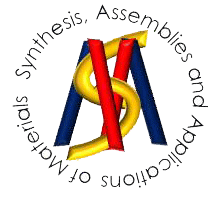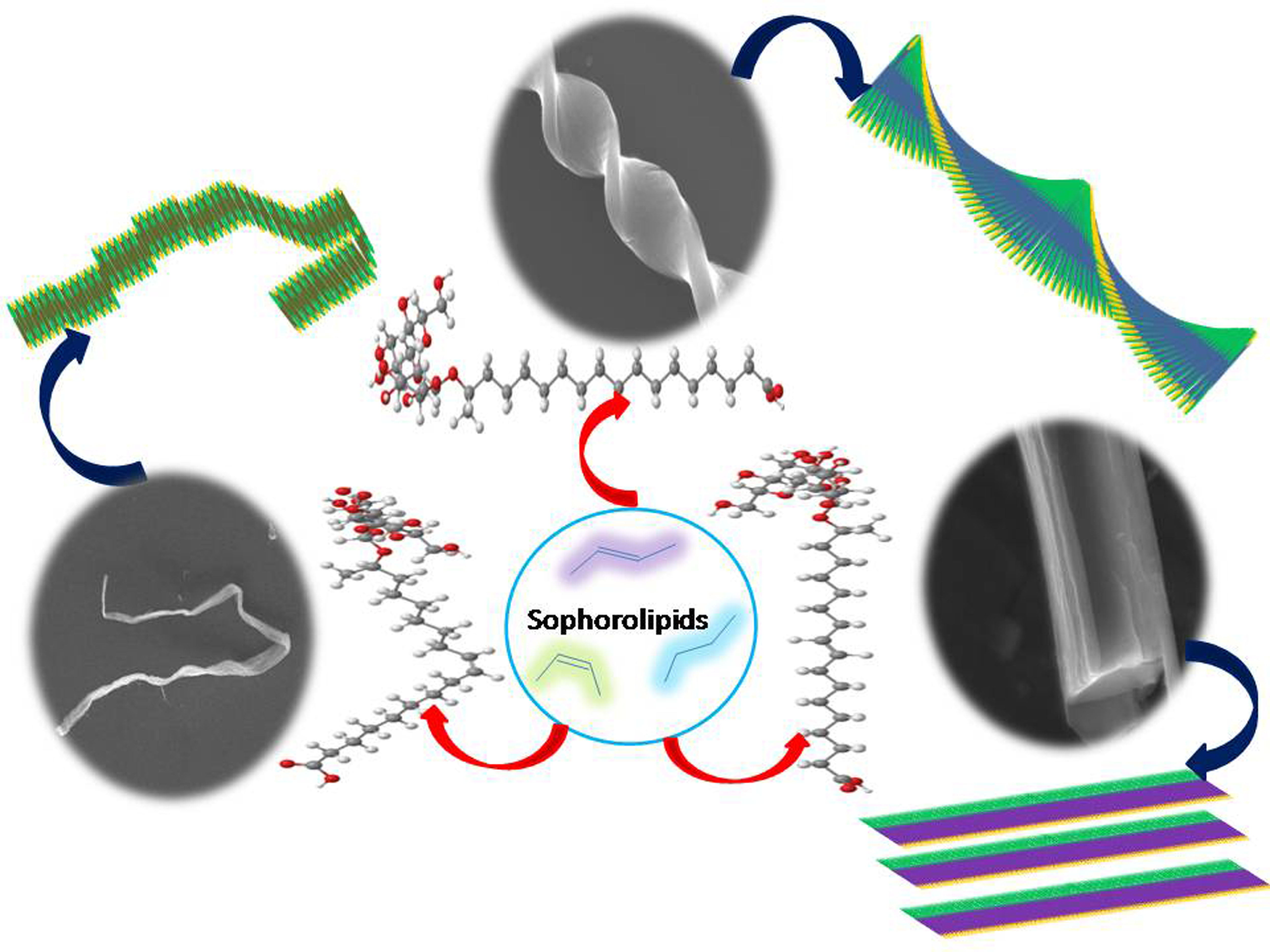Biomaterials and Tissue EngineeringModification of porous polyethylene scaffolds for cell attachment and proliferation In this project our group is modifying a porous polyethyelene scaffold (PPE) in order to attach inorganic nanomaterials. Followed by further modification by attaching hydrophilic amino acids it helped in attachment and proliferation of panc1 cells, which ultimately indicates production of b cell producing transcription factors. On the other hand the same scaffolds were modified by silver nanoparticles exhibiting excellent antibacterial properties along with providing a healthy niche for growth and proliferation for CHO-K1 cells. Our current work involves differentiation of different cell lines by changing the nature of capping agent and further modification of capping agents for more effective cellular binding.
References: (1) V. D' Britto, S. Tiwari, V. Purohit, P. P. Wadgaonkar, S. V. Bhoraskar, R. R. Bhonde, B. L. V. Prasad, J. Mater. Chem, 2009, 19, 544 - 550. (2) V. D' Britto, H. Kapse, H. Babrekar, A. A. Prabhune, S. V. Bhoraskar, V. Premnath, B. L. V. Prasad, Nanoscale, 2011, 3, 2957 - 2963. Molecular/Nanoparticle self - Assemblies Biosurfactants Self - Assembly In nature there is nothing not self - assembled. Molecular self - assembly is the basis for the formation various nanostructures. The so formed nanostructues have various applications in biology to materials chemistry. The forces that govern the self - asemblies are mainly weak in nature. Although there are many molecules known to self - assemble, glycolipids is one of the new class of molecules in which researchers are more interested. In our group we are trying to understand the self - assembling behaviour of some of the bio derived surfactants. Due to its unique features they are emulating with the petrochemical derived surfactants. In the last few years Sophorolipids, (one of the glycolipids) got great interest in scientific community for various reasons including its self - assembing behaviour. This belongs to class of asymmetric bolamphiphiles. Unlike the other amphiphilic molecules, the unique structural features of sophorolipids makes us to understand the self - assembling behaviour. We are mainly working on, understanding and how to control the various supramolecular structures of sophorolipids by different methods.
References : (1) D. Prabhu, B. L. V. Prasad, Chem. Rec, 2017, 17, 1 -15 (Personal Account;invited review) (2) S. Zhou, C. Xu, J. Wang, W. Gao, R. Akhverdiyeva, V. Shah, R. Gross, Langmuir, 2004, 20, 7926 - 7932. (3) N. Baccile, F. Babonneau, J. Jestin, G. P. Arnaudet, I. N. A. V. Bogaert, ACS Nano., 2012, 6, 4763 - 4776. Size - Variation and Assembly of Nanoparticles Synthesis of nanomaterials of desirable size is one of the primary focuses of our group. By combining influences of metal-ligand interaction, ligand type, temperature, time etc we have been able to bring great variation in nanoparticle size. Apart from this, we study different kinds of ordered nanoparticle assemblies ranging from 2D monolayer to 3D closed fcc packed structures. We also attempt to unravel influence of different factors like nanoparticle size, ligand chain length, evaporation time etc on assembly pattern. These investigations offer a powerful route to design novel materials featuring programmable properties.
References: (1) P. Sahu, B. L. V. Prasad, Chem. Phys. Lett., 2012, 525 - 526, 101 - 104. (2) P. Sahu, B. L. V. Prasad, Nanoscale, 2013, 5, 1768 - 17714. (3) P.Sahu, B. L. V. Prasad, Colloids Surf. A, 2014, 447, 142 - 147. Ultrathin sheets of metal or metal sulfide from molecularly thin sheets of metal thiolates in solution Metal thiolates are a class of materials which exist as lamellae in their solid state. We prepared gram scale quantities of various metal thiolates like palladium thiolates and nickel thiolates that exist as lamellae in their solid state, and found out that these could be readily dissolved in common organic solvents like toluene and chloroform. As these metal thiolates readily form solutions with common organic solvents we questioned ourselves as to what would happen to their lamellar structure as they go into solvents? Quite gratifyingly we could reveal that these lamellae in their solid state upon dilution with organic solvents get disintegrated into molecularly thin nanosheets which could act as precursors for realizing metal and metal sulfide sheets.
References : (1). B. Busupalli et.al., Chem Mater, 2014, 26, 3436 - 3442. (2). P. J. Thomas et.al Prot. Indian Acad. Sci. (Chem Sci.), 2001, 113, 611 - 619. (3). J. N. Coleman et. al, Science, 2011, 331, 568 - 571 Process Intensification of Metal Oxide Nanoparticles (NPs) Synthesis In nature metal and metal oxides are found in free state which plays vital role in the environment, science and technology. We are intersted to explore the potential of wet chemical synthesis method to obtain phase pure, shape and size metal and metal oxide NPs. Understanding the size and shape evolution would be useful to tune the properties of metal and metal oxide NPs. NPs properties can be tuned by engineering the shape and size of particles. There is a key challenge to scale up he production of size and shape selective NPs. For large scale up reactor design and reaction conditions are important issues. Variation in reactor material such as glass, quartz can solve penetration depth hurdle in reactor design. We are optimizing the batch reaction parameter that can be taken off for the continuous flow method. We are synthesizing stoichiometric phase pure metal oxides NPs using microwave irradiation. These metal oxide NPs applicable in nanoelectronics, energy storage and photocatalysis/ catalysis etc.
References : (1) I. Bilecka, I. Dierdi, M. Niederberger, Chem. Comm, 2008, 7, 886 - 888. (2) H. Kawazoe, M. Yasukawa, H. Hyodo, M. Kurita, H. Yanagi, H. Hosono, Nature, 1997, 389, 939 - 942. (3) L. I. Hung, C. K. Tsung, W. Huang, P. Yang, Advanced Materials., 2010, 17, 1910 - 1914. Selective Catalytic ActivitySynthesis of Ultra-Small Transition Metal Nanoparticles (NPs) by Modified Digestive Ripening Method Digestive ripening is a well- known method to synthesize monodispersed NPs from from a polydispersed system. This method is already enormously applied to synthesize Au, Ag NPs. This method has been applied to synthesize monodispersed transition metal NPs for the first time. Moreover, this method has been modified, which yields transition metal NPs of ultra samll size. The catalytic activity of NPs depend upon the size and shape of them. These ultra small sized NPs have shown unique selective activity for the hydrogenation reactions, which is very useful to reduce the number of steps of reactions in organic total molecule synthesis.
References : (1). X. M. Lin, C. M. Sorensen, K. J. Klabunde, J. Nanopart. Res, 2000, 2, 157 - 164 (2). B. L. V,. Prasad, S. I. Stovea, C. M. Sorensen,K. J. Klabunde, Langmuir, 2002, 18, 7515 - 7520. (3). D. S. Sidhaye, B. L. V. Prasad, New. J. Chem, 2011, 35, 755 - 763. Surface Modification of Nanoparticles Surfaces of nanomaterials plays crucial role in interactions for any applications. Here we are trying to modify the surfaces of materials by using amorphous porous silica coatings to form core shell architecture. This silica can further be functionalized by using a variety of silane reagents to get desired functionality on surface. Au nanoparticles are thus conjugated with beta-Glucosidase enzyme to form a bifunctional catalyst which can catalyze a model tandem reaction. Differentially functionalized MSNs could be promising candidates for separation and isolation of water pollutants, Intracellular delivery of hydrophobic drugs and an alternative for micellar catalysts. We are currently pursuing the synthesis of such materials by combining the tools of traditional silane chemistry and modern click reactions. The systematic fuctionalization is also important in biological applications of nanomaterials. Super paramagnetic nanoparticles are especially very interesting as they can serve both diagnostic and therapeutic roles in cancer treatment. We are also interested in fuctionalization of such materials for better therapeutic purposes.
References: (1). A. K. Ganai, P. Shinde, B. B. Dhar, S. S. Gupta, B. L. V. Prasad, RSC Adv, 2013, 3, 2186 -2191. (2). A. K. Ganai, R. Bhardwaj, S. Hotha, S. S. Gupta, B. L. V. Prasad, New J. Chem, 2010, 34, 2662 - 2670 (3). J. Kim, H. S. Kim, N. Lee, T. Kim, H. Kim, T. Yu, I. C. Song, W. K. Moon, T. Hyeon, Angew. Chem. Int. Ed, 2008, 47, 8438- 8441. |








